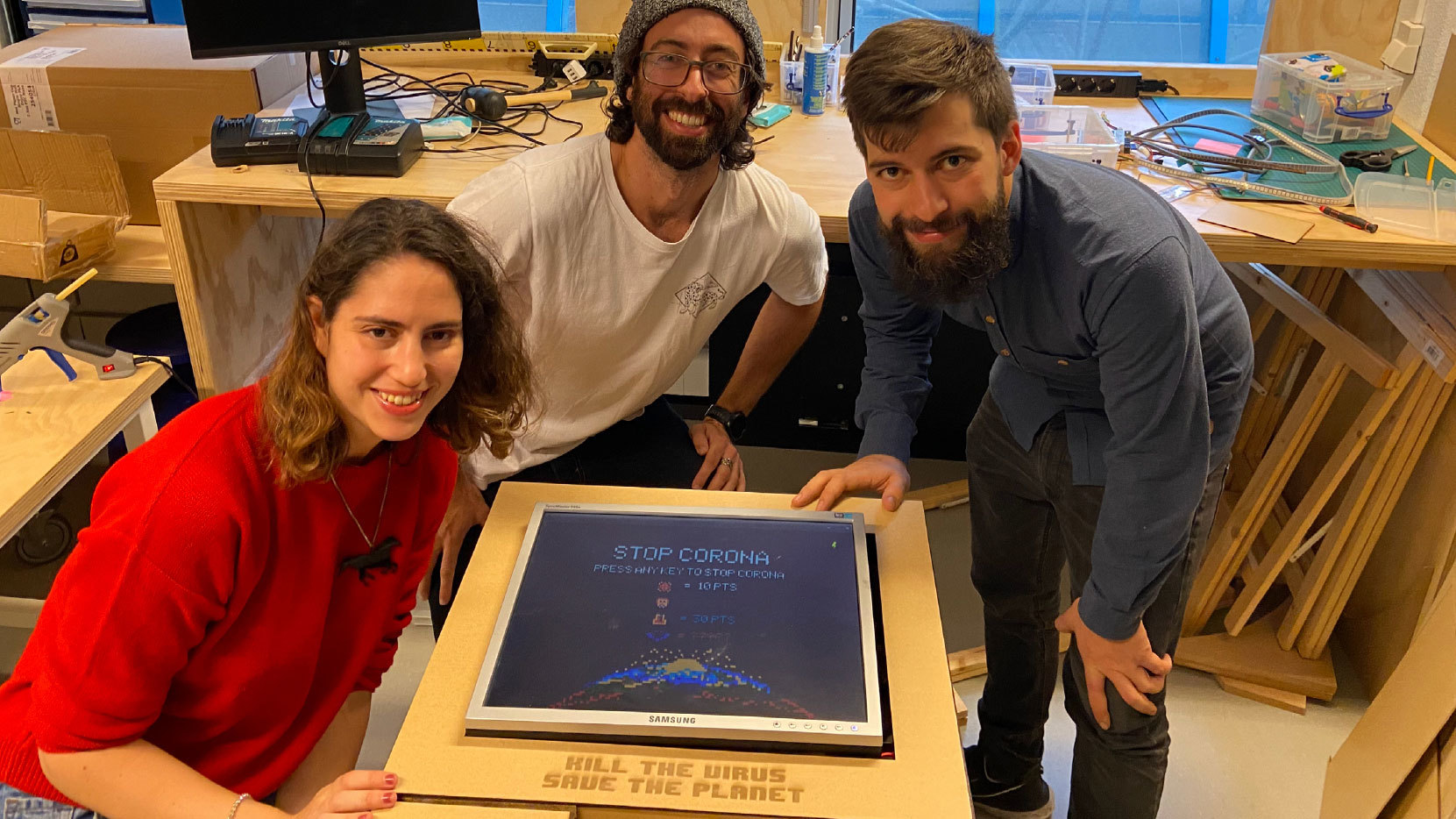
Tutu
A Quiet Presence in a Noisy World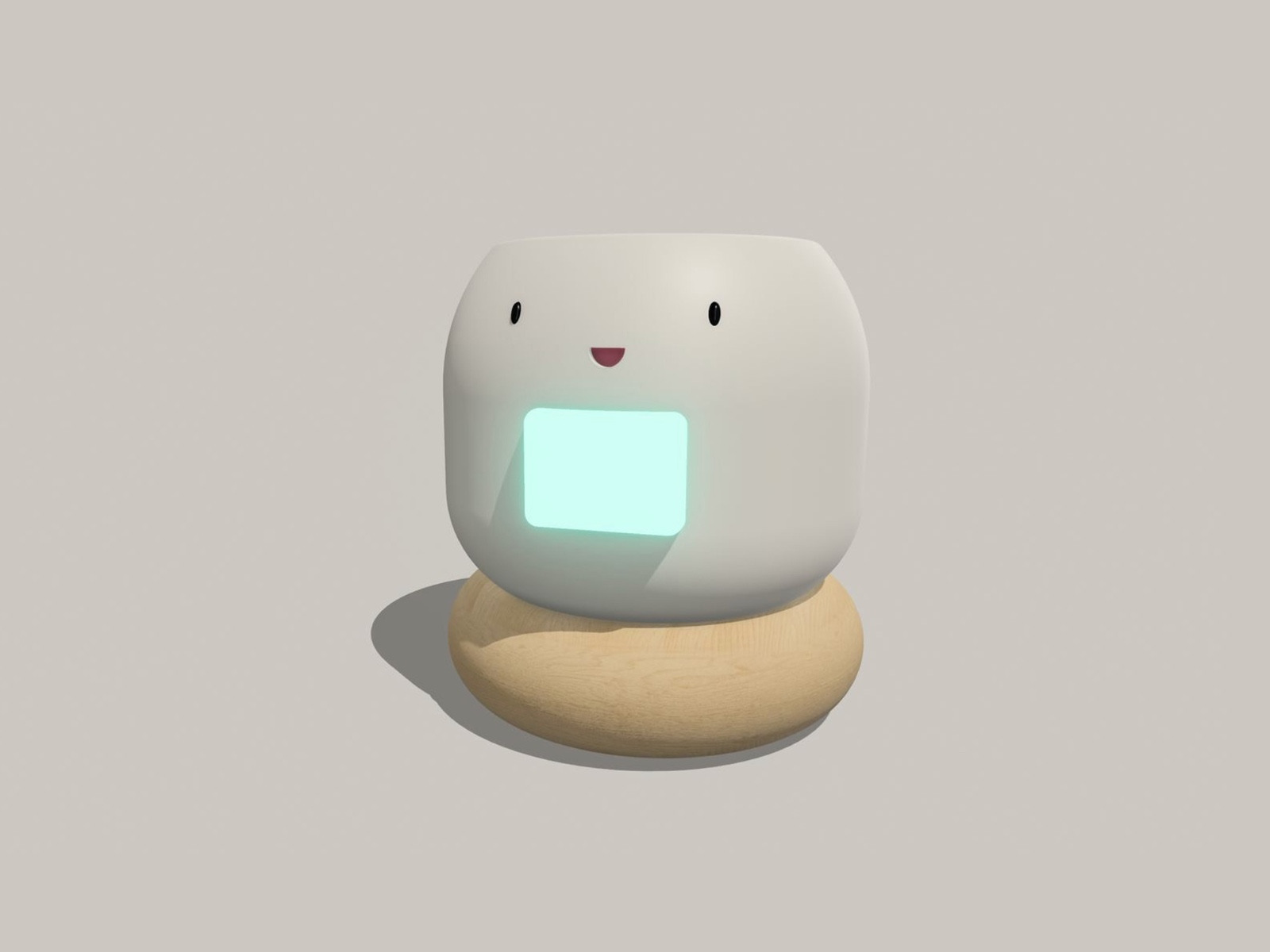
- Client:
- Team:
-
Disciplines:
Interaction Design, Product Design, Experience Design
-
Schoolyear:
2024-2025
Tutu is a soft AI-powered companion designed to support older adults during moments of anxiety, confusion, or distress, especially in response to rising issues like phone call scams, loneliness, or cognitive overwhelm.
Technology often aims to connect us, yet it can leave many feeling more alone, especially the elderly. Tutu explores how an AI-powered, screenless companion can support emotional well-being through subtle cues like vibration, audio cues, and light, offering gentle guidance during moments of stress or anxiety.
Where the Story Begins
The story of Tutu began with a simple but universal question: How can technology help people feel less anxious in their daily lives? Our team initially set out to create a wearable that could coach users through stressful moments using AI-driven feedback. However, as our research evolved, we realized the wearable market was already crowded and most devices were designed for young, active, tech-savvy users.
During our desk research, one insight stood out: elderly people are often excluded from the design of wellness technologies, despite experiencing significant emotional challenges such as stress, loneliness, and grief, especially after losing a partner. This discovery reshaped our direction. We wanted to create something that would bring comfort, not through data or screens, but through presence.
Tutu was born from the desire to design a technology that feels human, something that listens, not commands. Something that acts as a subtle presence.
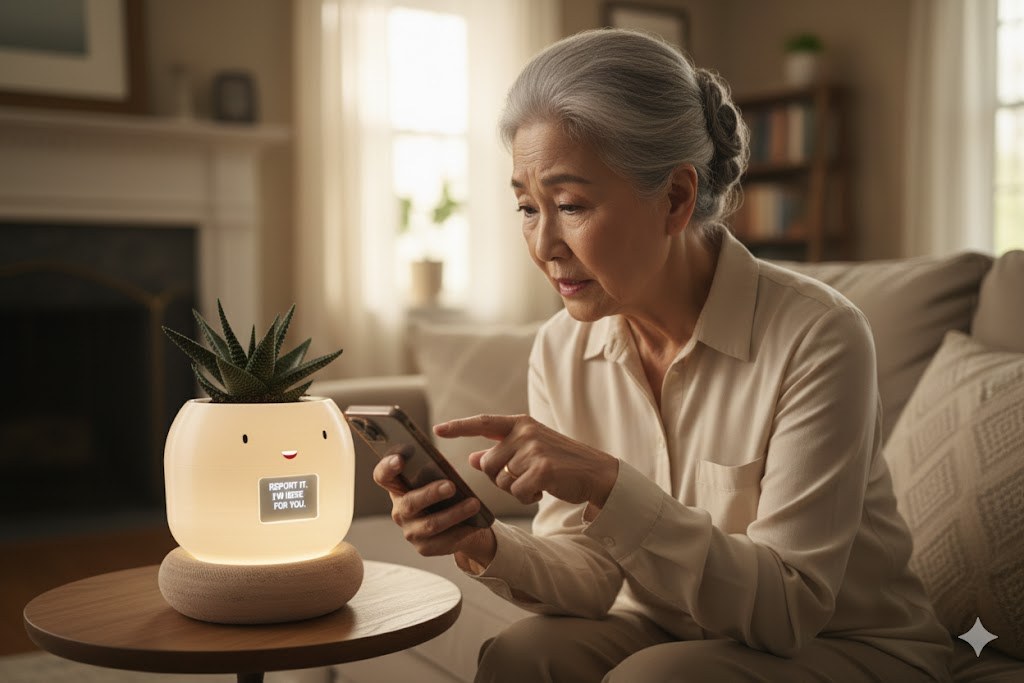
A Quiet Form of Intelligence
Our process began with interviews and surveys with elderly people and their caregivers to understand their routines, triggers, and how they perceive technology. We found that many elderly users find wearables uncomfortable and confusing, preferring simple, tangible interactions that feel intuitive, something they can feel and relate to rather than learn. These insights guided us to transform the concept from a wearable into a standalone companion, an object that could live naturally in a home space. Tutu monitors biosignals such as heart rate and responds gently when stress indicators arise.
The team focused on designing the haptic experience, crafting vibration and light patterns that could support breathing and grounding exercises. Through a series of tests, we explored various vibration intensities and rhythms to understand which patterns felt most natural and calming. The results showed that slow, rhythmic pulses paired with soft lighting helped users synchronize their breathing and reduce heart rate more effectively.
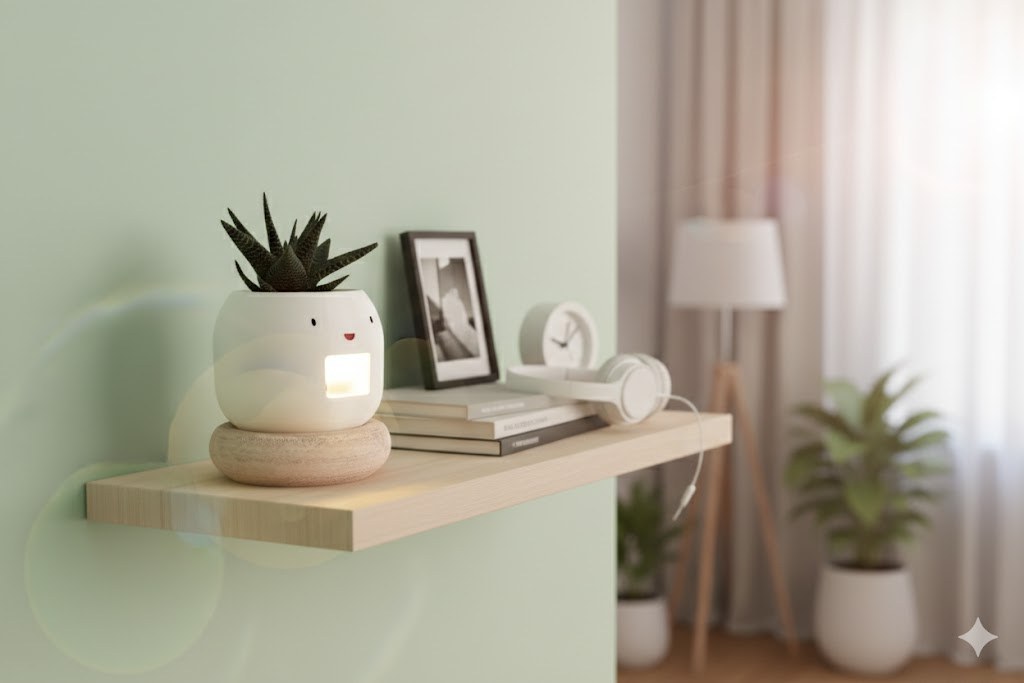
We complemented these with audio feedback, giving the AI a friendly, human-like presence that could softly say: 'take a deep breath' or 'stretch for a moment.' Together, these multisensory interactions created a sense of empathy, a calm presence instead of an instructive machine.
Alongside the wellness aspect, we also explored a speculative scenario where Tutu acted as a digital guardian against phone scams, a growing issue among the elderly. We trained the AI to detect suspicious language patterns typical of scammers and provide gentle, real-time guidance, reminding users not to share sensitive information like bank details or personal identification. This exploration highlighted the emotional overlap between stress, confusion, and digital vulnerability and how an empathetic, conversational AI could protect users without creating fear or dependence.
The process wasn’t linear. We faced moments of uncertainty, refining our direction and rebalancing the role of technology in our concept. What emerged was a product that feels both intelligent and comforting, quietly attentive rather than demanding attention.
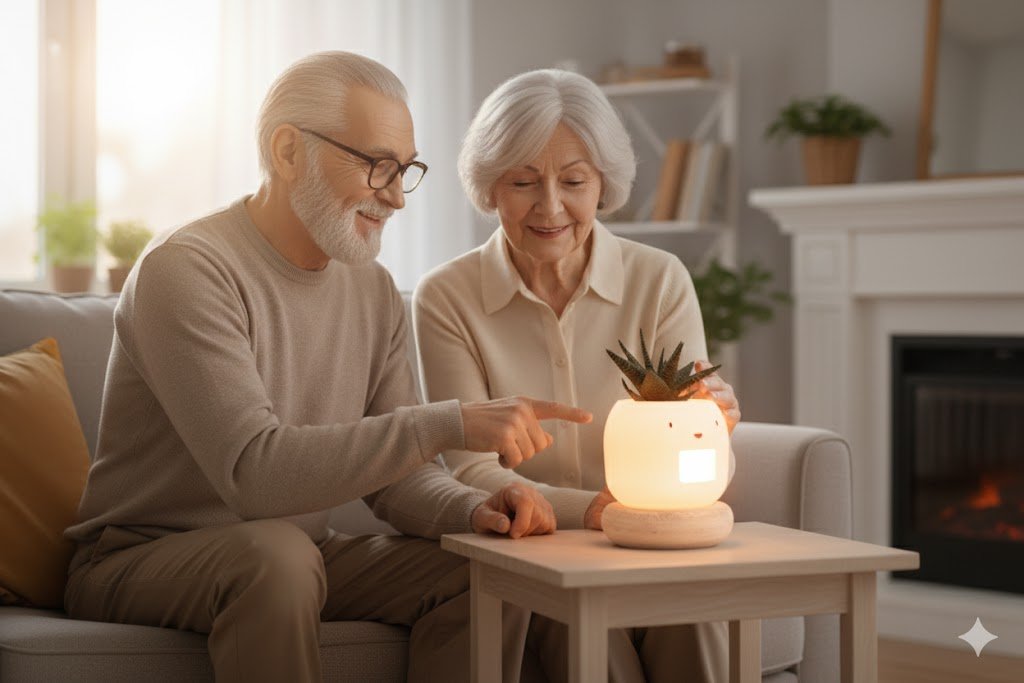
Designing Calm Through Touch
Tutu is a small, screenless, and intuitive companion designed to sense stress and guide users back to calm through multisensory feedback. It doesn’t track or measure; it listens and responds, creating a space for reflection and emotional balance.
Our findings showed that haptic feedback can play a significant role in emotional regulation, offering a tactile way to reconnect mind and body. Designing for the elderly also taught us how simplicity and emotional warmth can make technology more accessible and more human.
User Journey Insights
Through interviews and empathy mapping, we uncovered that many elderly users experience stress during daily routines, particularly around moments of loneliness or unexpected disruptions. These moments informed the user flow and interaction design.
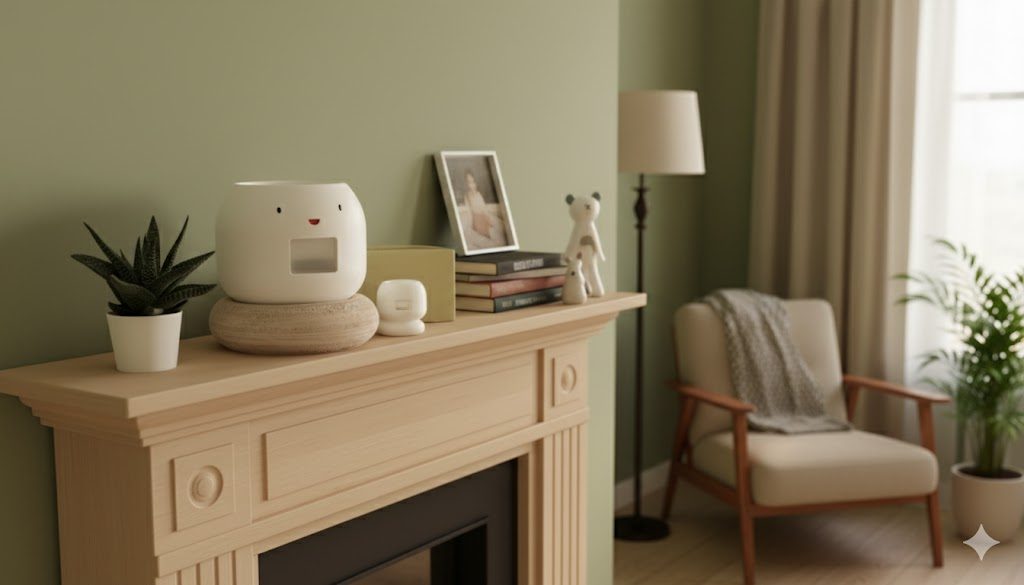
Early Explorations: Wearables as Companions
The project began as an exploration into wearables, intimate forms that could blend seamlessly into daily life. Our initial goal was to design an emotionally intelligent accessory, capable of sensing physiological states and responding through subtle haptic cues. These early sketches capture how we imagined technology as wearables bringing comfort through tactility and presence.
Transitioning to a Companion Device
As our user research deepened, we realized elderly participants preferred not to wear technology all day. This insight guided our shift toward a standalone, tactile companion, one that could live within their environment, but still feel personal and responsive. We explored shapes inspired by organic forms and small pets, minimal yet comforting.
Final Design as a companion
The final prototype embodies a gentle, empathetic presence. It learns from users’ routines and offers calming feedback through light, vibration and audio cues. The 3D renders illustrate its minimal yet expressive design language.
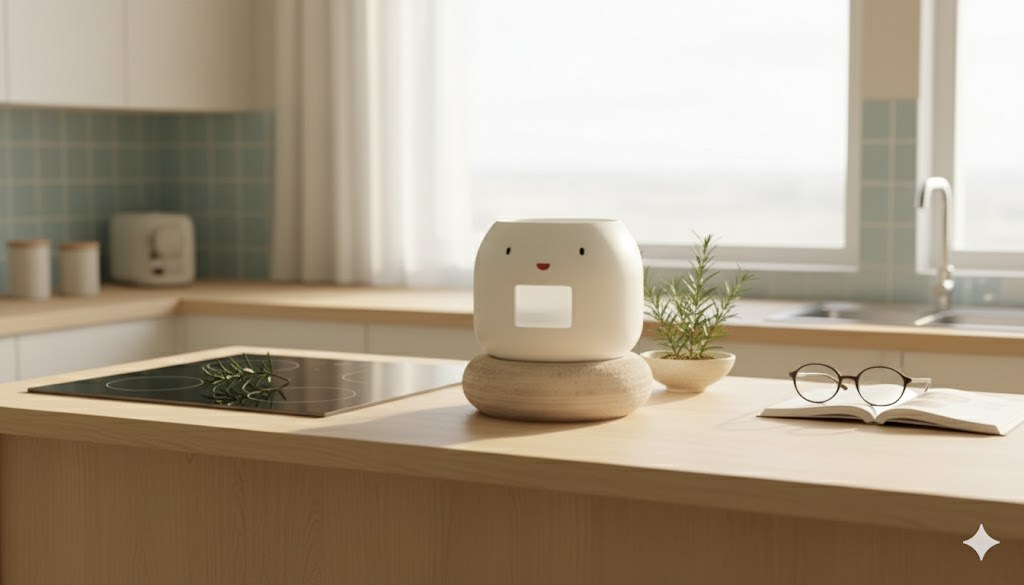
Exhibition Showcase
We integrated a pulse sensor, vibration motor, and LED lights into a Raspberry Pi-based prototype. The device responded to heart rate fluctuations by triggering calming haptic and light patterns, encouraging users to take a moment to breathe and re-center.
Tutu was exhibited as part of the Master Digital Design showcase, ThingsCon 2024 and is part of Dutch Design Week 2025. Visitors can interact with the device through touch and voice, experiencing how it responds to emotional cues. The exhibition setup emphasizes the calm and approachable nature of the design.
What's Next?
Looking ahead, Tutu opens doors for future wellness technologies that focus on empathy and presence rather than control. It asks a simple but powerful question: What if technology didn’t demand our attention, but helped us find peace within it?
